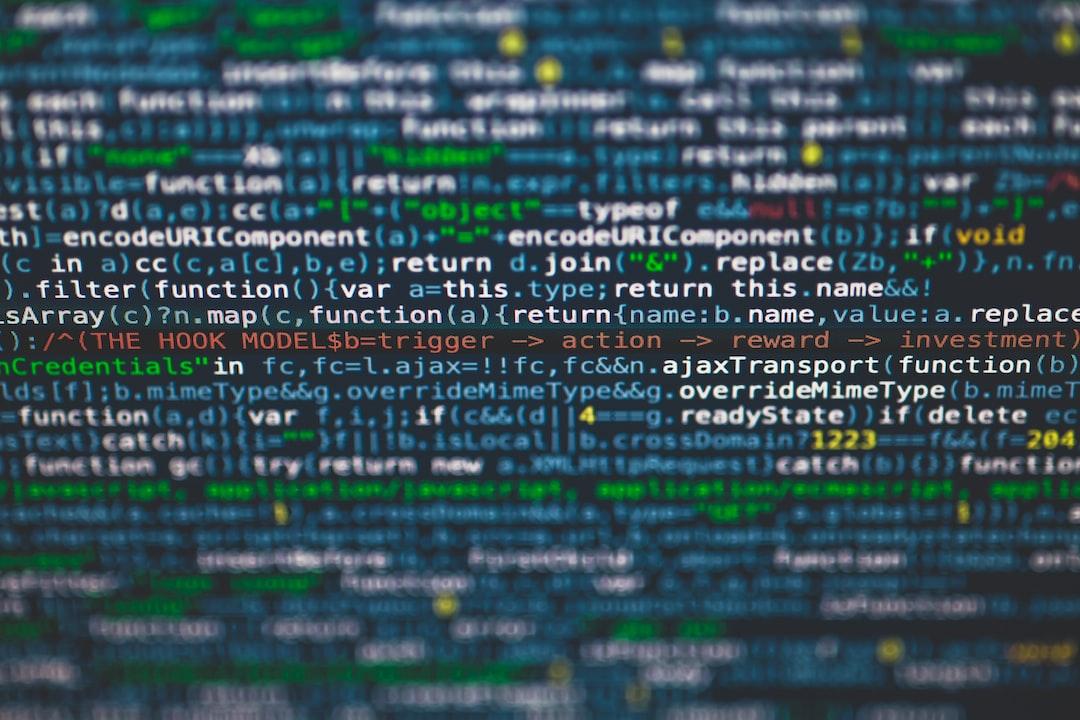Cryptocurrency researcher Bridget Harris believes that the cryptocurrency industry will experience a new wave of modular development in the future, particularly in the areas of settlement, execution, and aggregation. Through modularization, existing Ethereum functionalities can be strengthened or new development opportunities can be created for the ecosystem.
Table of Contents
Toggle
Modularization Focuses on Data Availability and Sorter Layers
Potential Development Opportunities in Modularization
Settlement Layer: Customization to Reduce Existing Security Costs
Execution Layer: Challenges in Higher Flexibility Combinations
Aggregation Layer: Aggregating Value in Zero-Knowledge Proof Processes
In the Brewing Wave of Modularization Narratives
In the past two to three years, modularization in the crypto field has seen many innovations and progress, but most of them have been focused on breakthroughs in the Data Availability (DA) and Sorter layers. However, Harris believes that the Execution, Settlement, and Aggregation layers have been relatively overlooked areas.


Harris believes that the modularization field can be divided into Data Availability, Execution, Settlement, Sorter, and Aggregation layers. The Data Availability domain is mainly monopolized by three major players: Celestia, Avail, and EigenDA. The shared Sorter domain already has many competitors, including Espresso, Astria, Radius, Rome, Madara, and RaaS providers such as Caldera and Conduit.
Advertisement – The article continues to scroll down




(Celestia (TIA) Mainnet Launch | Opportunities and Challenges for Modular Blockchains)
On the other hand, there has been relatively little development in the Execution, Settlement, and Aggregation layers, but there are project teams that have already seen opportunities and have been working on these areas silently.
The Settlement layer can serve as the place to define the final state result to protect the security of execution results. In practice, the Settlement layer can also act as the Execution layer when there are transaction disputes by re-running the transaction and verifying the proof to resolve fraud disputes. The biggest challenge for Ethereum as a Settlement layer is its low scalability, as it cannot handle the throughput of general applications. Therefore, some teams are trying to use modularization mechanisms to address this issue.
Hyperliquid has developed its own consensus algorithm to create a highly specialized and customizable Layer1. Its core architecture does not rely on existing Tendermint consensus algorithms, providing a faster Layer1 transaction platform for perpetual contract transactions and allowing custom optimizations. However, users still need to cross-chain from Arbitrum.
Recommended reading:
Near and EigenLayer Bring Fast Settlement Layer SFFL to Achieve Layer2 Fast Communication
The explanation of Fast Finality Layer, SFFL, provides a clearer understanding and modularization opportunities for settlement and finality in the blockchain industry.
To meet the demand, some teams have even developed their own settlement environments in their protocols. For example, Repyh Labs is building a Layer1 network called Delta. Although this is a design concept opposite to modularization, it still aims to provide flexibility in the existing environment. However, the disadvantage of custom architecture is the lack of liquidity.
The predecessor of the Execution layer was the general Layer1 competitive chain, such as Solana or BNB Chain, but now it more commonly refers to general Rollups such as Arbitrum or StarkNet. In recent years, the only functionality that has surpassed Ethereum in the Execution layer is higher throughput and TPS. However, the approach has shifted from building new competitive chains in the past to using modularization methods to implement them in the Ethereum ecosystem, leveraging Ethereum’s liquidity and security.
But now, modularization in the Execution layer is not just limited to Rollups. Recently, there have been innovations in different virtual machines (execution environments), such as incorporating the execution environment as part of a shared network, allowing for more splitting and allocation, providing developers with higher flexibility and customization. For example, Layer N allows developers to run multiple virtual machine environments (such as EVM, SolanaVM, MoveVM) or multiple specific application environments (such as perpetual contract exchanges, order book decentralized exchanges) nodes.
Teams in this field are also trying to achieve composability and shared liquidity between different architectures, allowing each application on the Execution layer to asynchronously transmit information to each other without delays in consensus. Breaking down communication barriers between different database architectures to maximize overall network throughput.
Aggregation refers to providing users or any traffic with more efficient ways to find corresponding markets or resources. The most familiar aggregation scenario for most people is 1inch, which integrates liquidity from various decentralized exchanges to provide users with the best trading path.
Harris believes that aggregation applications seem to be undervalued by the market, especially for decentralized exchanges, cross-chain bridges, and lending protocols. For example, the total market value of the tokens of the two mainstream decentralized trading aggregators, 1inch and 0x, is only about $10 billion, which is only a small fraction of Uniswap’s $60 billion valuation.
The same is true for cross-chain bridges and lending protocols. In the lending field, Yearn Finance is the leading decentralized lending aggregator protocol, with a market value of only about $200 million, while Aave has about $1.3 billion. Compared with Across cross-chain bridges, the market share of cross-chain bridge aggregators such as Li.Fi and Socket/Bungee is relatively small; aggregators are given less value by the market.
Therefore, Harris is considering whether embedding the aggregation layer into the platform or the underlying consensus of the blockchain can bring new market opportunities.
A recent example is Polygon’s AggLayer, where developers can easily connect their Layer1 and Layer2 to the network. The network aggregates relevant proof mechanisms, allowing CDK-compatible blockchain networks to achieve a unified liquidity layer.


AggLayer can integrate liquidity from multiple ecosystems.
The concept of the Aggregation layer usually involves integrating proof mechanisms to facilitate interoperability of assets from different blockchain networks. Similar cases include Avail’s Nexus interoperability layer, Nebra, Astria, Sovereign, etc., which integrate liquidity through proof aggregation or sorter auctions.
Recommended reading:
Introduction to Shared Proof Layer: Why is it an important cornerstone of modular development?
Recommended reading: This article provides a clear introduction to the importance and market opportunities of the Shared Proof Layer (Proof Aggregation Layer), using major existing projects such as Nebra, Avail Nexus, and AggLayer as examples to explain the concept. It is highly recommended for readers to gain a clearer understanding of the positioning of this article.
Whether it’s the Settlement layer, Execution layer, or the recently emerging Aggregation layer, these are areas that have received less attention in modularization in the past. Unlike the Data Availability layer, which had been “unknown as to which one,” a new wave of true innovation is beginning to emerge. Perhaps this is driving the new direction for modularization development in Ethereum.
Recommended reading:
Introduction to Aligned Layer: How to Strengthen Zero-Knowledge Proof Applications through Verification?
Recommended reading: This article introduces how Aligned Layer, by building a decentralized Settlement layer, provides faster zero-knowledge proof software settlements for projects with lower security requirements. Readers can gain a clearer understanding of the future technological development described in this article.
AggLayer
Hyperliquid
Layer N
Modularization
Aggregator
Zero-Knowledge Proof


Further reading:
Introduction to Execution Layer Network Fuel Network: How will it provide efficient computing environments through parallel computing and state reduction?
Intense Competition in the Modularization Track | Polygon CDK Integrates Celestia to Enhance Competitiveness

